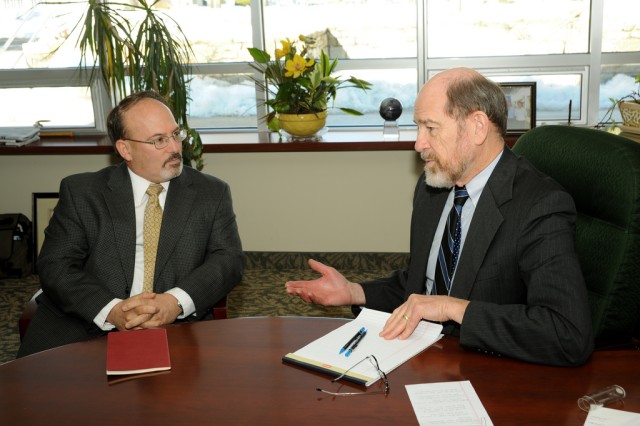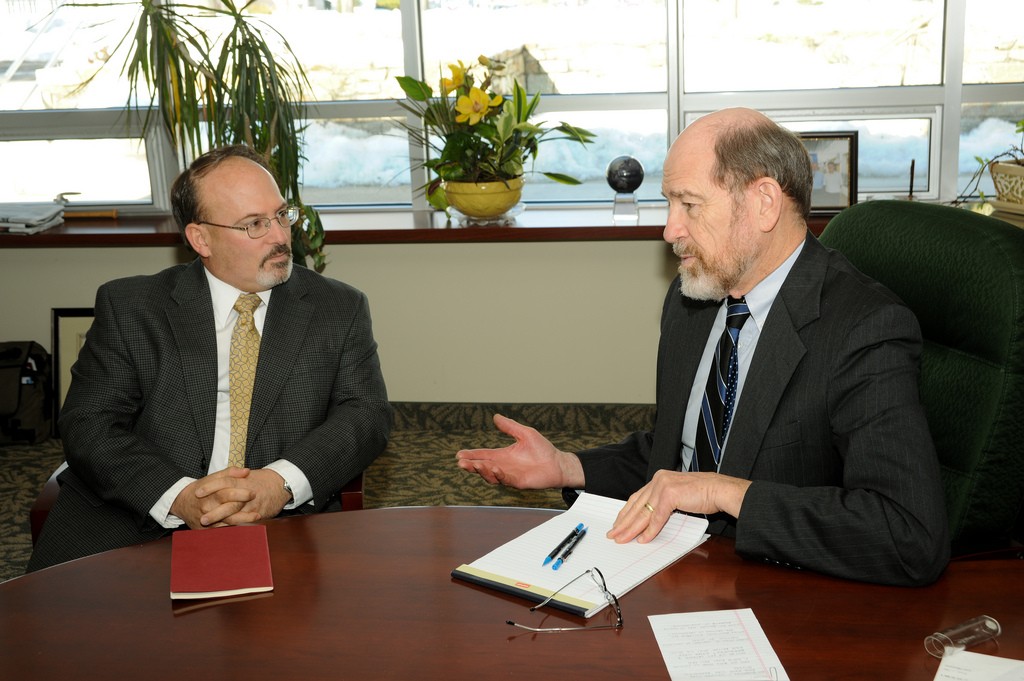BEL AIR, Md. -- Partnerships with local schools are vital for Aberdeen Proving Ground to meet the challenges of the base realignment and closure, commonly known as BRAC, a senior U.S. Army official said.
As APG evolves into the Army's new hub for science and engineering, Maryland and the region will need to build and retain the workforce to ensure technological support to Soldiers remains strong, said Gary Martin, U.S. Army Research, Development and Engineering Command executive deputy to the commander.
Strengthening the Army's future workforce
Martin met with Harford Community College President Dennis Golladay at the school's campus Feb. 3 to discuss how to bolster the Army's relationship with Maryland educators.
"How do we attract, hire, retain and develop the workforce that we're going to need'" Martin asked.
The installation's 70 organizations are now identifying skills they will need. Within five years, 40 percent of APG employees will be eligible for retirement.
Computer science, electrical engineering, accounting and finance will be among growing career fields resulting from the retirement wave, Martin said.
"We are trying to get a much better handle on educational needs," he said. "Put the requirements out so the higher-education system can say, 'I can meet that need, and this is what I'll do about it.' "
Golladay said HCC's efforts will bolster student opportunities. These include the Higher Education and Applied Technology Center in Aberdeen, which offers distance-learning to seven schools across Maryland. Towson University also plans to offer classes at HCC so students can complete their bachelor degrees in Bel Air instead of traveling to Towson.
These options allow economical and convenient access for students to further their education, Golladay said.
Engaging students in science
Martin and Golladay both stressed the importance of bolstering science, technology, engineering and mathematics, known as STEM, education in schools.
"How do we get that excitement into the community'" Golladay said. "I've seen it work."
Martin said the greatest need for improvement in STEM outreach is synchronization. He hopes to create synchronization when he leads a STEM summit Feb. 11 at APG with officials from the Army, defense contractors, higher education and Harford and Cecil County public schools.
Martin's goal is for summit participants to agree on an outreach model. A common focus will help to measure the impact and effectiveness of STEM efforts, he said.
Spurring student interest in science at an early age and supporting teachers by bringing experts into the classroom to demonstrate real-world science are among Martin's objectives.
Golladay described the success of STEM outreach during his tenure as president of Cayuga Community College in New York. He is confident the same success can be achieved in Maryland.
"There are a lot of efforts going on that don't have central coordination. We need that," he said. "We need informed excitement from all of us [in education, government and industry].
"Focus on real-world projects that teams of students solve. That's how you build the excitement and the enduring interest," Golladay said.


Social Sharing